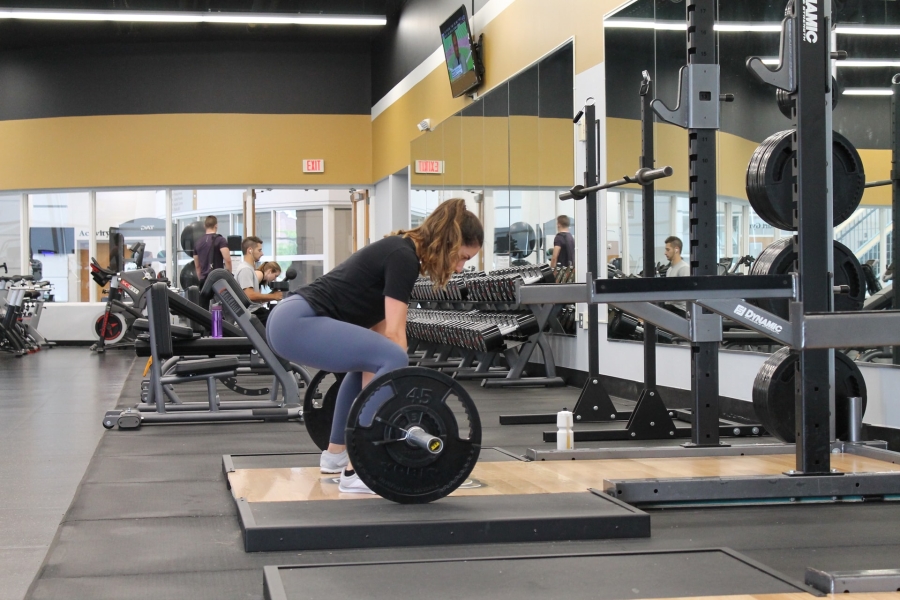
But your members need to easily understand what they get from being a member and how much it costs them. Your membership levels and the prices attached to them help you stay in business and keep doing what you love.

Price it too high, and you'll scare customers off. Price your memberships too low, and you'll do the same. The key is balance.
Your gym needs to be able to customise memberships according to your business model, the demands of your clients and what you can offer.
And in this article, you'll see precisely how to do that.
Common types
There's no end to the world of membership types. Depending on your data and how well you know your customers, you may be able to create an entirely new membership type exclusive to your facility.
However, here are some of the most common gym membership types that can help you create a solid foundation.
Annually
A single yearly payment for a set range of facilities and services.
Annual memberships are less popular than they once were, but they're an option worth considering to lock in clients for the long term. A year might not be a long time in the bigger picture, but it is when it comes to gym memberships. Consider adding flexibility to annual memberships and allowing annual members to refine their access once every quarter or so.
Annual memberships are a great way to implement psychological pricing and make other membership levels seem less (or more) attractive.
Monthly
Monthly memberships are the most common and default type of membership in a fitness facility.

Every month, a fixed fee that's usually direct debited from a member's account. Monthly memberships can be paid annually or quarterly, which may warrant other perks or benefits.
Pay-As-You-Go (PAYG)
A popular option amongst students, shift workers, newbies and young clients, the PAYG option makes it easier for people with an inconsistent and irregular schedule to stay fit.
Implement a PAYG option to help appeal to those with a more chaotic schedule.
Dynamic
Dynamic prices look at the popularity of a single service, class or section of your facility and, accordingly, prices access to it.
For example, a pilates class that's most popular at 6 PM would be priced higher than once that's run at 11 AM.

Dynamic pricing is a great way to even out the flow of clients into your facility. Some clients prefer saving money over working out and are happy to adjust their schedules accordingly.
College/Military/Senior/Rehab memberships
Discounts and memberships tailored to a particular demographic or lifestyle will help you appeal to that segment more. If your facility is in a part of town where the average age is above 50, you might want to cater to that audience.
Similarly, if you work closely with physiotherapists, sports doctors or other professionals, it can pay to make your facility more appealing to those that can use your facilities to help them recover from an injury. Muscle strength fades after just two weeks of inactivity. Helping gym-goers who are injured or unable to work out at total capacity helps them and keeps them coming to your facility.
Service/Cost relationship
In establishing the prices for your gym, you need to think about what you'll be offering - or, in other words, your expenses. Consider the following:
Equipment
The quality of your equipment and the way it integrates with Fitech will make your facility more attractive and justify a higher price point. However, implementing that equipment and technology isn't always cheap.

If a client has to step onto a treadmill with a fraying belt or a pec deck with damaged handles, it will be harder for you to justify your pricing. Therefore, think about the cost of your equipment and maintaining it when it comes to creating your pricing plan.
Staff
Staff will be the most expensive asset of your facility. They'll need to work with clients but also manage your facility.

PerfectGym's club management software takes the pain out of the management process and frees them up to do what's more important - work with your clients.
Services
Perks like saunas, steam rooms, access to trainers and other specialists and discounts at points of sale make your facility more attractive. They are an expense to you and something that has to be factored into each membership level.
Establishing pricing
You've established the numerical values behind your gym memberships. Now it's time to take a look at a few other factors that can help your facility grow and retain its client base.
Clients aren't always individuals.
In 2017, only 26.1% of high school students participated in at least 60 minutes per day of physical activity.
This statistic and trend is something that parents are becoming more aware of and want to change. Family memberships are a great way to help mom and dad make easier decisions about their family's health. PerfectGym's Family Plans make it easier to sign up people from the same family under the one membership and manage them accordingly.
Club Towers used PerfectGym's family plans to merge three separate facilities and increase LTV amongst their members. See how they did it.
Study your competitors
Your competitors have navigated the jungle of memberships, so why not learn from them?
It's imperative that you know their pricing in order to make your facility the more attractive option, but it doesn't hurt to try to calculate how they came to those conclusions about their membership levels, too.
By looking at what your competitors do (and don't) offer in their membership levels and their facility overall, you can take massive steps in making your facility the more attractive option.
Structuring your pricing
Not everyone who picks your $29.99 monthly option will want just a cardio workout. Some of them might be powerlifters, and others might be prepping for a competition.
Structuring your pricing and membership levels to suit the services and equipment that are most in-demand can help you appeal to the maximum number of gym-goers.
More clients = more options
If your facility has a small trickle of people throughout the day, simplified monthly memberships may suit all of your customers. But as you start to attract seniors, new moms, people going through rehabilitation and so on, your simplified membership structure will become more restrictive.

Depending on the people in your facility, and the resources they need, you'll need to plan your tiers accordingly.
Use data
Using the data that comes from your customer behaviour can help you create a better membership structure and price each tier accordingly.
PerfectGyms BI and Analytics module uses machine learning to correlate data and extrapolate trends to help you make better decisions at every point of your customer's lifecycle.
Such intelligence can help you understand the point where most customers churn. With this in mind, you can tailor membership lifecycles to minimise that churn and retain customers for longer.
Timed memberships
If your facility has a torrent of clients coming in throughout the day, then you can afford to keep your prices where they are. But if you're seeing significant fluctuations in the number of people in your facility throughout the day, consider lowering costs during quieter periods.
Consider a membership level that incentivises clients to come in during quieter periods. This enables you to stagger the staff you need during busy periods and have a steadier flow of clients throughout the day.
Factor in loyalty
LTV, or lifetime value, is an essential metric that many fitness facilities overlook. During the time that your customer is a member of your facility, how much do they spend? Obviously, you want to make this figure as high as possible, but consider rewarding that loyalty once the lifetime spend has gone over a certain amount.
Loyal customers will build the foundation of your facility, so it's vital to treat those that love your facility accordingly.
Bringing it all together
The task of establishing membership levels and the costs for each tier isn't easy, and there's so much to consider and so much that impacts the price. You don't want to scare customers away with your pricing, but you don't want to operate at a loss either.
To make your final prices look more appealing, consider the value that you can add to each membership, rather than just access and services.
Let's look at an example:
Christine wants to buy a new pair of leggings. She buys most of her products on Amazon, as it's convenient. However, she's noticed that the quality of products from Amazon lately is getting worse, and prices are going up.

So she decides to look elsewhere.
Christine is price sensitive - she isn't overly loyal to a brand name but just wants good quality activewear that will last more than one season.
She comes across a small retailer that's based a few towns over. They're new, and their prices are similar to what's on Amazon. This smaller brand doesn't offer next-day delivery like Amazon, but it does have a 90-month, no questions asked return policy. It has more sizes and even has an exchange program - send in your old legging and get a discount on your next purchase.
This is value-added selling.
The leggings from Amazon and the local retailer are probably made in the same factory. Still, there's added value around the smaller brand - the extended returns policy, more sizes and patterns, the exchange program. There's more value to the brand, not just the product itself.
And your fitness facility can do the same - rather than just giving access to more equipment at higher levels of your membership tiers, how else can you add value?
Consider adding more value by:
- Increasing the referral bonus
- Higher discounts at secondary spend facilities
- Access to a broader range of specialists
- Early access to new facilities and services
- On-boarding kits for new signups
Value-added selling like this helps you price your membership levels more competitively and make the higher level memberships feel more enticing.
Conclusion
Setting gym membership levels and costs is probably one of the most challenging parts of setting up a gym. There's simply so much to consider and so many elements impacting the final price. It's essential not to over-charge, but you also need to be making a profit.
Take the time to look at competitors and your own data to figure out the best membership tiers for your facility. Remember that this will be a process of trial and error!